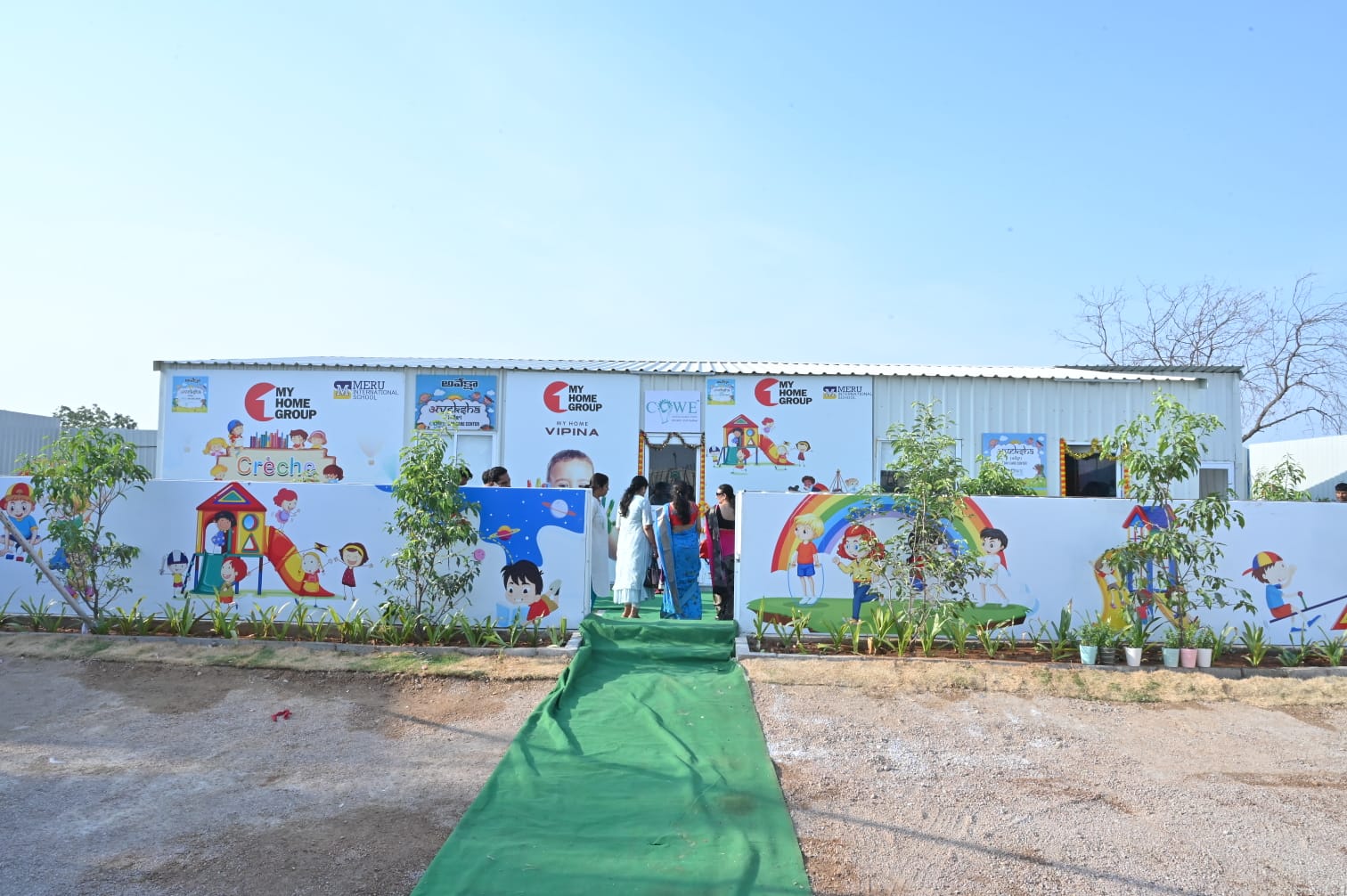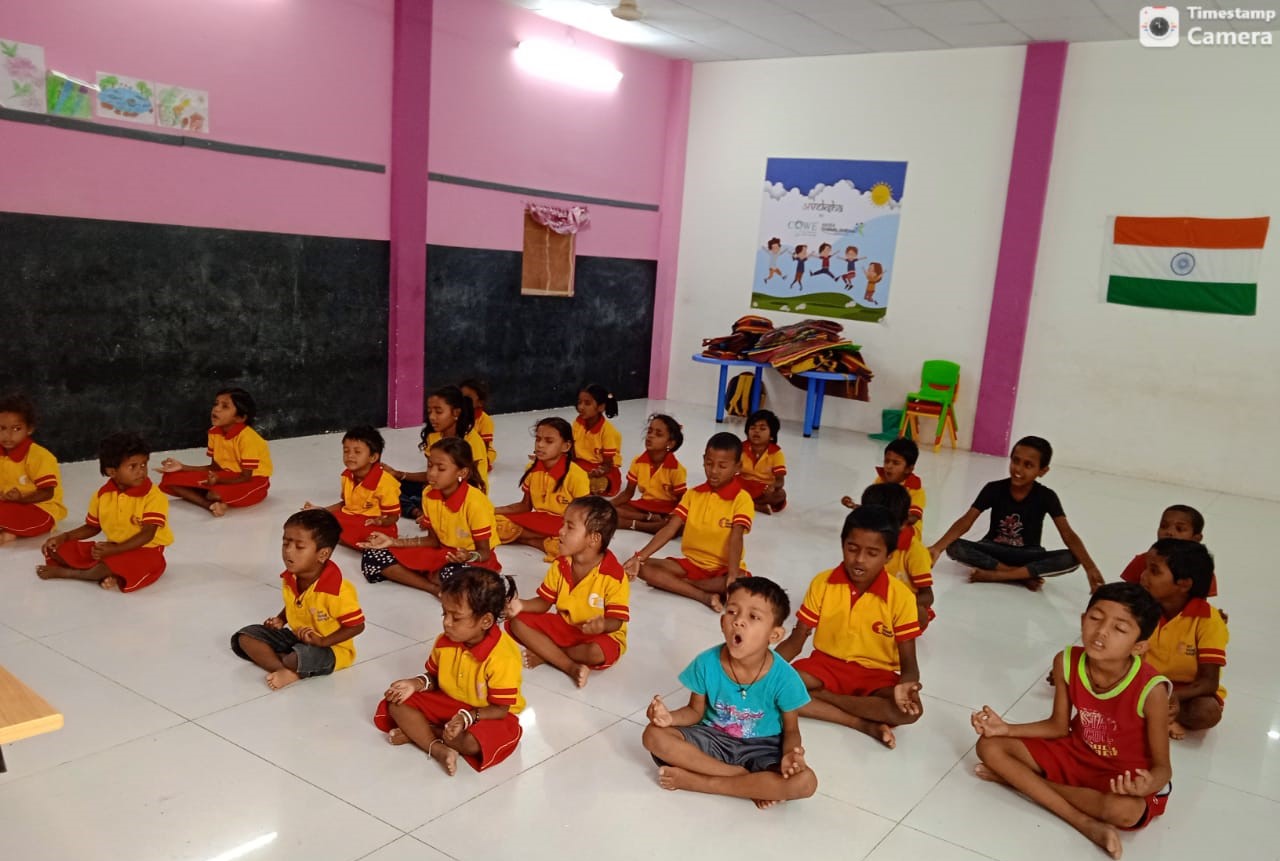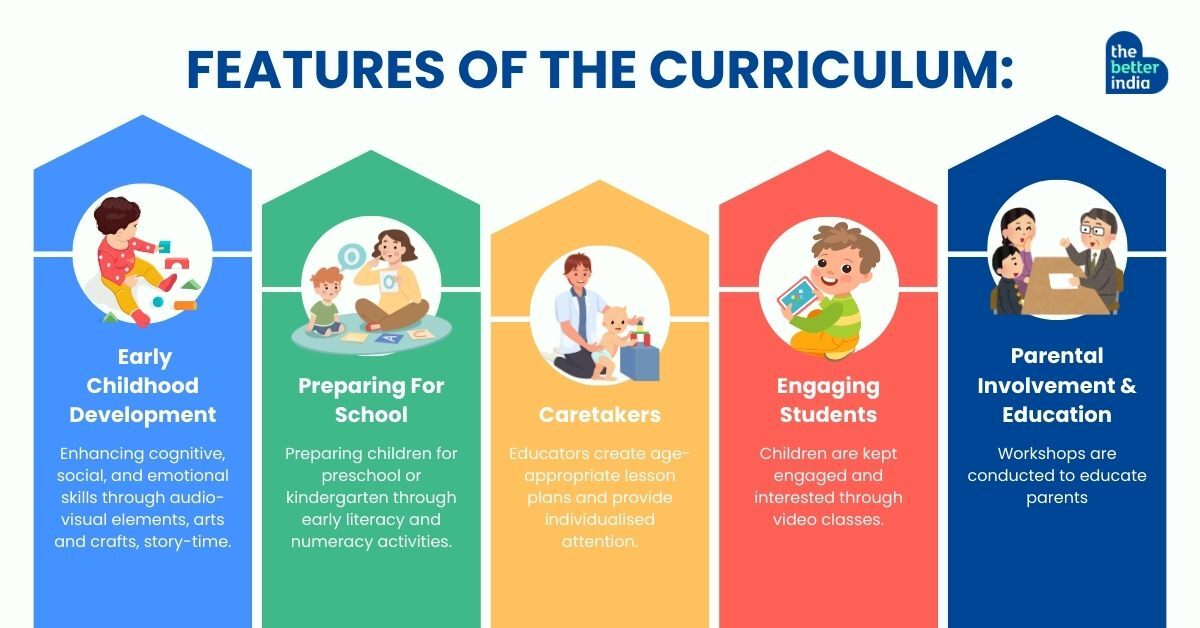This article is sponsored by Meru International School
In India, you cannot help but spot young children at a construction site living in makeshift houses with their parents who work there. While they may belong to different parts of the country, what unfortunately remains common is the fact that these children don’t go to school.
This might be due to a multitude of factors ranging from frequent movement of the parents to not having a basic understanding or not having the appropriate ID cards. However, these reasons pale in comparison to what these children are losing out on — the right to basic education.
As it happens, those working in the construction and real estate industries are most exposed to this social problem. A senior employee at My Home Constructions, a real estate company in Hyderabad, was disturbed when he saw these children not going to school. They were often left behind unattended, which could be extremely dangerous.

When he shared this with Ramu Rao Jupally, the vice chairman of My Home Constructions, Ramu Rao immediately agreed to help, and the team reached out to Meghana Gorukanti Jupally, who runs Meru International School, to find a solution. How could they provide early childhood education in a nurturing and safe environment? By building a daycare centre-cum-play school called the Meru Aveksha.
The first Meru Aveksha centre was opened last year at an upcoming residential project by the My Home Group in Kokapet, Hyderabad. Over the past 12 months, two more centres were opened in the city. The three centres cater to over 150 children, from infants to 12-year-olds, providing them a safe place to stay during the day, while empowering them with the necessary skill sets.
Safety, education and food
The Meru Aveksha team first spoke to the parents and children of the migrant labourers to understand the major gaps. They found that there was no facility for these children to spend time during the day and they found it difficult to gain admission in government schools due to the lack of basic identification documents like an Aadhar card.

“Most of these children would either come to the site with their parents or stay at home. Some of the older children sometimes also start working very early. We wanted to provide them safety, education and food. We found that the best way to do this would be through a daycare and playschool centre,” says Meghana.
Built at construction sites, these centres are spread over half an acre. They have an indoor and outdoor play area, classrooms, audio-visual rooms and much more. Teachers from Meru International School built a basic to advanced curriculum that would focus on languages, numeracy, physical activity, arts and crafts, as well as health and hygiene skills, depending upon the age of the kids.
Open from 8:30 am to 3:30 pm, each day starts with circle time, indoor playtime, toilet breaks (to inculcate good habits), English, Hindi, and Math classes, along with audio-visual aids (music/dance/movies/storytelling/art), and more.
The biggest challenge was convincing the parents. Only after the parents accompanied the children to the centre daily did they understand the benefits.
“We counsel the parents on the importance of early education. Our idea is to create a habit of coming to a structured space daily. After attending this centre for two or three years, they will be ready to join a mainstream school,” adds Meghana.
After many interventions which impressed on the importance of education, children started attending the centre.
The basics of early childhood education
Each centre has a caretaker and two qualified staff members. The curriculum is designed to improve learning outcomes and bridge the gaps.
“All students first start with a common curriculum, which includes alphabets. Once they progress, they are given textbooks and worksheets for the next level. They are then divided into smaller cohorts and taught as per their levels,” says Meghana, adding that each student is provided with a uniform, textbooks and worksheets.

The biggest change that the Meru Aveksha centre members have noticed in the children is a behavioural change. “Their attitude towards themselves has changed. From not attending classes post-lunch, they all come back now. They have started enjoying themselves. The most critical change we have seen is that they are engaged and interested,” says Meghana.
Besides their learning levels and understanding, their socio-emotional skills have developed to a great extent, according to her. “We are catering to a segment that is completely neglected. They are learning for about two hours a day in a safe environment which is the biggest impact for us,” she adds.
The Meru Aveshka team wants to share this model with other real estate developers so that all construction sites can start a daycare centre.
If you are interested in learning more about this model, you can email them at meruaveksha@meruinternationalschool.com.
“We want to prevent children being left alone at home. Every child deserves a good education and a chance at a better life. Let’s give them that,” says Meghana.
Edited by Pranita Bhat
No comments:
Post a Comment